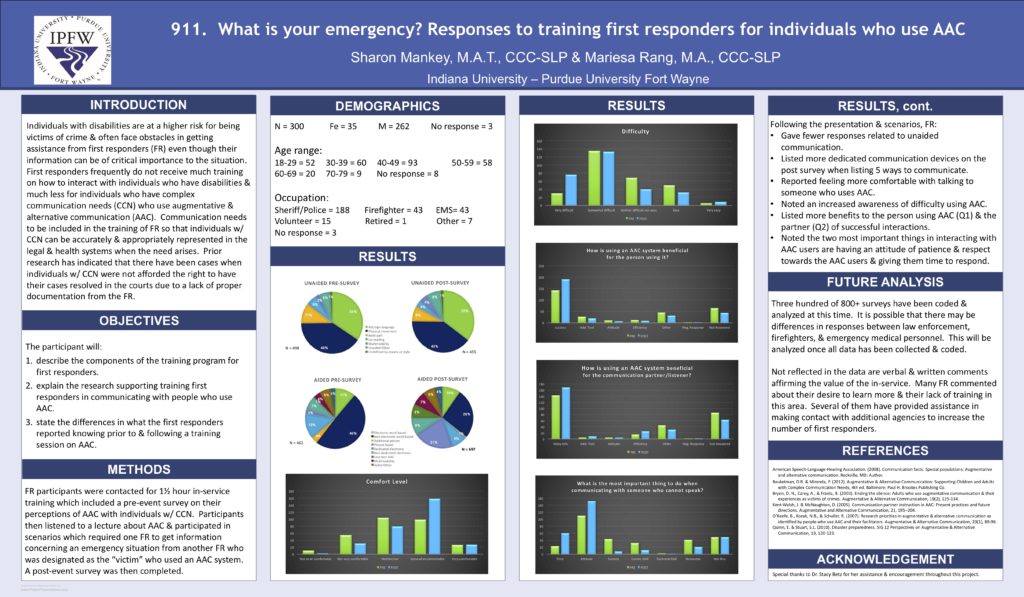1. Give basic skills and strategies to first responders to better communicate with individuals who are nonverbal.
2. Allows individuals who are nonverbal to have the power to give their own information and make decisions concerning their situations.
a. Recent problems with hurricanes and wildfires provided examples of situations in which people who use AAC were separated from their families and/or caregivers with no means to adequately communicate their needs.
3. This training helps to combat the stereotypic thinking that perpetrators may have thinking that their victims “can’t tell.”
Resources:
American Speech-Language-Hearing Association. (2008). Communication facts: Special populations: Augmentative and alternative communication. Rockville, MD: Author.
Beukelman, D.R. & Mirenda, P. (2012). Augmentative & Alternative Communication: Supporting Children and Adults with Complex Communication Needs, 4th ed. Baltimore: Paul H. Brookes Publishing Co.
Bryen, D. N., Carey, A., & Frantz, B. (2003). Ending the silence: Adults who use augmentative communication & their experiences as victims of crimes. Augmentative & Alternative Communication, 19(2), 125-134.
Kent-Walsh, J. & McNaughton, D. (2005). Communication partner instruction in AAC: Present practices and future directions. Augmentative and Alternative Communication, 21, 195–204.
O’Keefe, B., Kozak, N.B., & Schuller, R. (2007). Research priorities in augmentative & alternative communication as identified by people who use AAC and their facilitators. Augmentative & Alternative Communication, 23(1), 89-96.
Quinn, E. & Stuart, S.L. (2010). Disaster preparedness. SIG 12 Perspectives on Augmentative & Alternative Communication, 19, 120-123.

